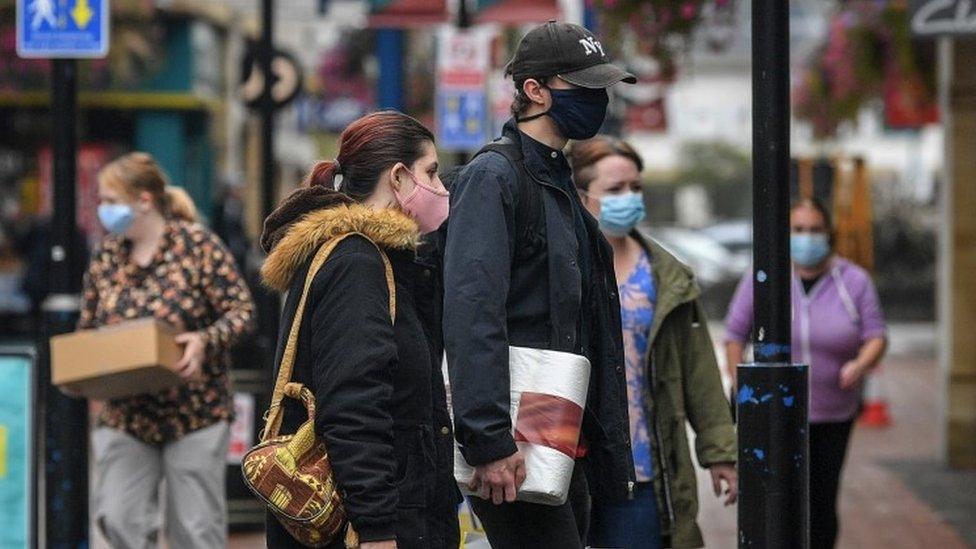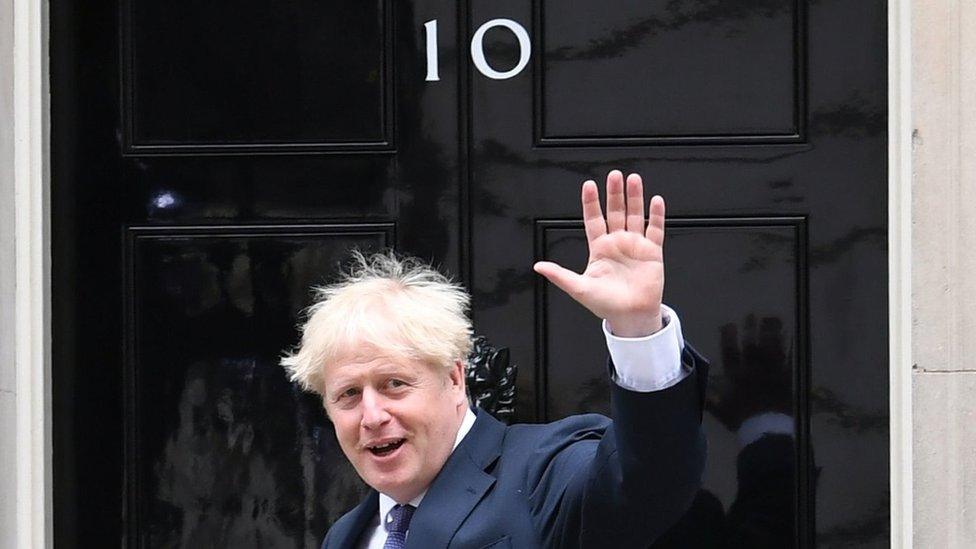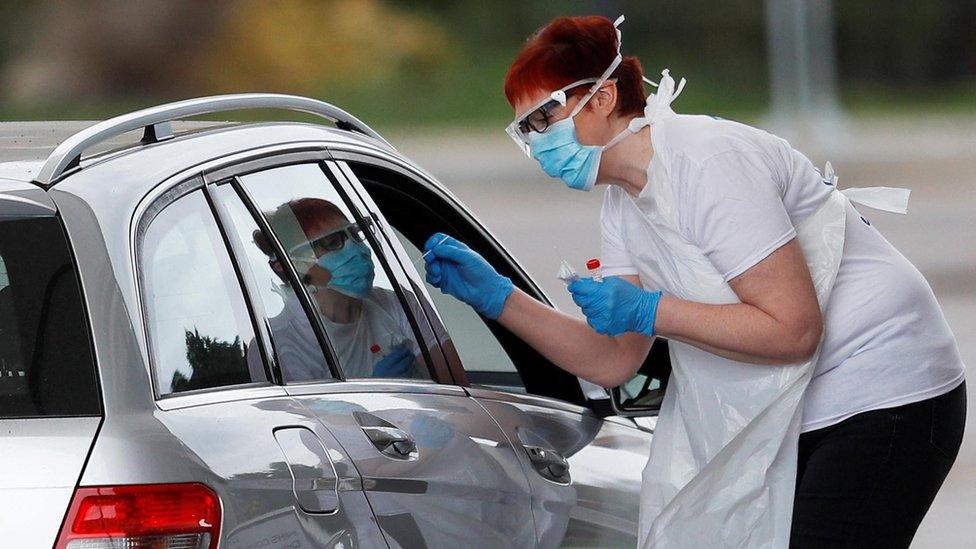The government's warning system is flashing red
- Published

Shoppers in Caerphilly, which is subject to a local lockdown
Expect to see the prime minister back at the lectern, possibly with one of his top scientific advisers, once again, urging the population to take care.
It won't mark the beginning of another national lockdown. Nor will it be the start of a new draconian regime.
But do expect to hear the prime minister emphasising the need for the public to follow the existing rules - being careful about social contact with people, isolating if ill, and (what seemed in the early days almost quaint advice in the face of a distant threat), to wash your hands.
And there will be a reduction in the numbers of people who are allowed to gather in groups indoors and outdoors in England from 30 down to six.
The reason for what may seem like a change of tone from the PM? Simple, the government is worried.
In the last four or five days there has been a significant rise in the number of coronavirus cases. It's not a gradual gentle drift upwards, but a sharp and obvious spike. The rate of positive tests is going up particularly among the 17-21s, but noticeable too among people in their 40s.
And rather than appearing to be only a problem in particular areas, the increase is relatively consistent across the country - 79 local authorities in England, for example, reported weekly case rates above 20 per 100,000.
Those factors mean there is deep concern in Number 10 that the statistics could be flagging the beginning of a generalised second wave of the pandemic.
It's important to say, the death rate is still very low. This could be the beginnings of a surge that has very different outcomes to the last terrible toll.

But in the early stages of the pandemic, the government had precious little information about what was going on. Since the early spring, a lot of effort has gone across government to gathering data to monitor how the disease is spreading. An early warning system was created, and it is flashing red.
There is a huge amount of guesswork about why the increase might be occurring, but there is no settled view on the specific factors. There is some evidence that some people who test positive are not always isolating.
And as we can all see in daily life, there is a gradual but noticeable increase in people being out and about. And simply, more contacts mean more risk of spread of the disease.
So as the health secretary has done in recent days, the government is likely on Wednesday to focus on trying to choke off the rise in cases.
The recent zeal to get as many people as possible back to work may slightly fade. But millions of people in the last couple of months have had a taste of life returning to normal.
Persuading people again to comply fastidiously to the rules won't be an easy task.
- Published8 September 2020
- Published8 September 2020

- Published5 July 2023

